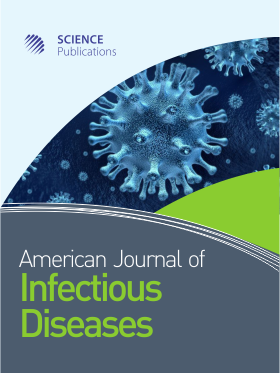Identification of Clonal Clusters of Klebsiella pneumoniae Isolates from Chennai by Extended Spectrum Beta Lactamase Genotyping and Antibiotic Resistance Phenotyping Analysis
- 1 Dr. M.G.R. Educational and Research Institute, India
- 2 Sri Ramachandra University, India
Abstract
Problem statement: An increased resistance to antibiotics has been reported in Klebsiella pneumoniae, an opportunistic gram negative pathogen belonging to Entrobacteraceae due to the evolution and spread of plasmid encoded extended spectrum beta lactamases and other genes conferring cross-resistance to other antibiotics. This is of concern due to the increasing cost of antibiotic treatment and the spread of multidrug resistance to more pathogenic microorganisms. This study was undertaken to analyze the extent of the problem, to identify the most prevalent MDR isolates of Klebsiella pneumoniae in Chennai and to identify new plant based drugs. Approach: About 188 clinical isolates of Klebsiella pneumoniae were collected from Chennai during the period Nov. 2007-Oct. 2008 and their resistance to different groups of antibiotics were analyzed. These isolates were further characterized by molecular studies to identify the ESBL genes conferring the resistance phenotype. Plant extracts were tested against the MDR isolates to identify new treatment methods. Results: Our results showed that the combination therapy of clavulanic acid with cephalosporins and fluroroquinolones-norfloxacin and ciprofloxacin were the most effective antibiotics for treatment of Klebsiella pneumoniae infections. However resistance to clavulanic acid was increasing among the isolates (17%). All the isolates harbored a plasmid containing one or more of the genes for ESBL resistance. Plasmid isolation from the Isolates followed by ESBL PCR genotyping showed that CTX-M was present in 75 % isolates and TEM in 73% isolates either alone or in combination with the other ESBL genes. SHV ESBL type was present only in 42% of isolates. We identified 4 presumptive clonal spreads which were likely to be prevalent in India by clustering based on ESBL genotypic and antibiotic resistance. The isolates with both SHV and CTX were correlated with the most pathogenic and clavulanic acid resistant isolates. The extracts of Hemidesmus indicus and Terminalia arjuna had a significant antimicrobial activity against the MDR isolates. Conclusion: There was an increase in the spread of the ESBL genes and clavulanic acid resistance in the clinical isolates of Klebsiella pneumoniae in Chennai. Our data also supported a higher incidence of CTX-M genotype in India though the SHV genotype was associated with the most resistant forms of ESBL. Future research with separation of plant extracts to identify bioactive principles will pave the way for newer plant based antibiotics.
DOI: https://doi.org/10.3844/ajidsp.2009.74.82

- 4,942 Views
- 3,288 Downloads
- 13 Citations
Download
Keywords
- Klebsiella pneumoniae
- ESBL
- TEM
- SHV
- CTX-M
- multi-drug resistant
- Hemidesmus indicus
- Terminalia arjuna
